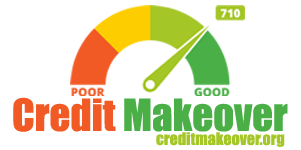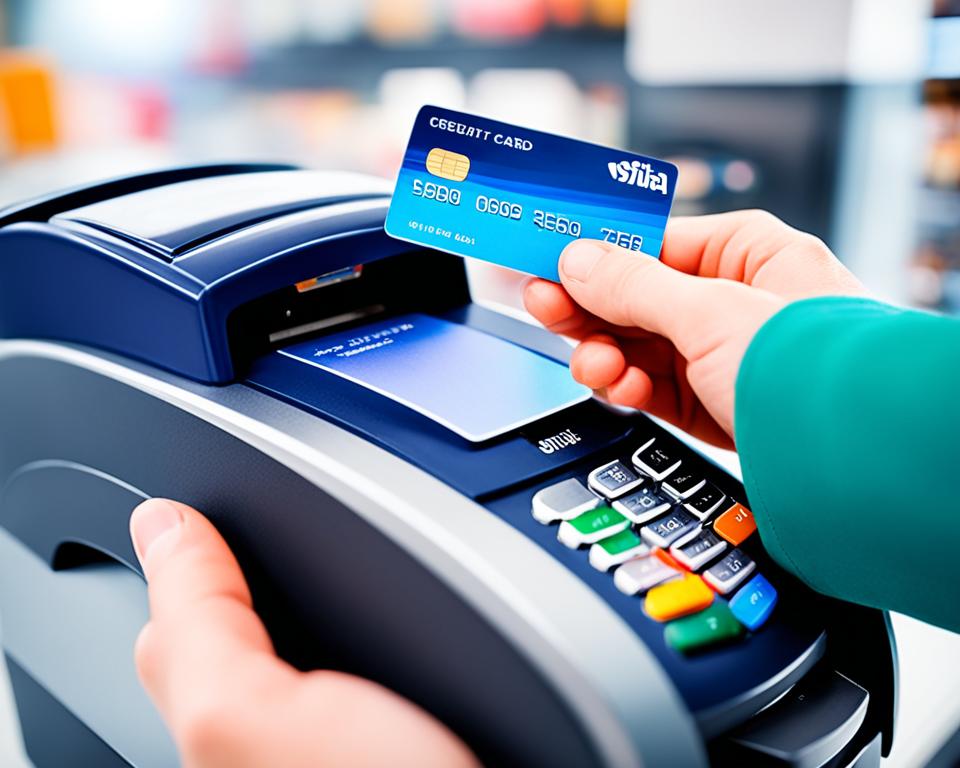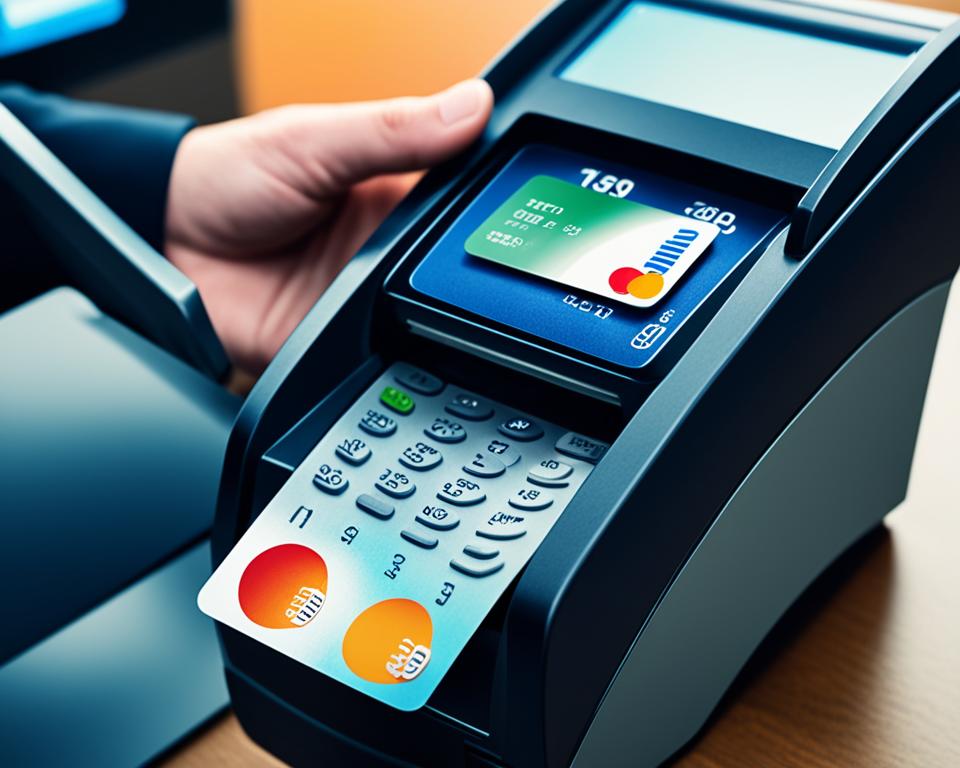For those dipping their toes into the financial waters, understanding the mechanics behind credit cards can seem daunting. Yet, mastering this tool is essential in today’s digital age, where transactions unfold with the swipe of a card. Credit cards are not just a payment method; they represent a revolving line of credit that, when used wisely, can enhance purchasing power and financial flexibility. This guide sheds light on how credit cards operate, from deciphering the Annual Percentage Rate (APR) to leveraging cards for credit building, navigating fees, and tapping into the myriad of benefits that come with card ownership.
Credit cards work by granting cardholders a specified credit limit, which they can utilize to make purchases or take cash advances. This creates an ongoing balance that is subject to interest charges if not paid off in full by the billing cycle’s due date. With each transaction, consumers engage in a promise: to repay the borrowed funds, thus influencing one’s credit score and overall financial landscape. This guide aims to demystify the process, ensuring consumers can make informed, prudent decisions regarding their credit card use.
Key Takeaways
- Credit cards provide a revolving line of credit with set borrowing limits.
- Understanding APR is critical to managing costs associated with borrowing.
- Regular repayment of credit card balances positively impacts credit scores.
- Staying informed on card fees helps in minimizing unnecessary expenses.
- Strategic usage of credit card benefits can lead to substantial savings and rewards.
Introduction to Credit Card Functionality
Delving into the world of personal finance, one must understand the underpinnings of Credit Card Basics Explained and have a comprehensive Bank Cards Overview. These financial instruments are not merely plastic cards; they are gateways to purchasing flexibility and power. Let’s unpack the functionality of credit cards and how they can serve as pivotal tools for both immediate purchases and longer-term fiscal planning.
Credit cards are built on the foundation of trust between the lender and borrower, with the issuer providing a pre-approved amount known as the credit limit. Individuals can harness this line of credit, which is cyclically replenishable upon payment, thus creating a sustainable financial resource. The essentials of credit card usage rest within the grasp of how, when, and where users can engage with their bank cards to manage everyday transactions and larger financial objectives.
One of the cardinal elements of credit cards is their ability to facilitate transactions without the immediate need for cash. Making purchases on credit means embracing the convenience and safety that come with using bank cards accepted universally. Beyond mere transactional use, credit cards serve as building blocks for credit history, influencing credit scores, and shaping one’s financial identity. Below, explore the inherent features that constitute the inner workings of credit cards:
- Borrowing Limits: Every card comes with a set credit limit – a ceiling to spending and a gauge for financial responsibility.
- Short-term Lending: With every swipe, dip, or online entry, cardholders engage in an implicit short-term loan agreement.
- Repayment Flexibility: Users enjoy the comfort of deferred payment, with the option to pay in full or over time, influencing potential interest accrual.
- Financial Empowerment: Through strategic use, credit cards can amplify a user’s ability to make empowered purchasing decisions.
Credit cards – ubiquitous in wallets and purses across the nation – serve not only as a means of payment but as financial Swiss Army knives, with uses and benefits as diverse as their holders. From fueling last-minute purchases to premeditated buys, the functionality of credit cards is interwoven with the modern fabric of commerce. Mastery of this fundamental financial tool can unravel new opportunities for savvy consumers who wish to leverage the mechanics of credit to their advantage.
Defining Credit: The Basics of Bank Cards
In an ever-evolving financial landscape, the concept of credit remains integral. Credit cards, in particular, serve as day-to-day financial tools, allowing consumers the convenience of making transactions on a promise to pay at a later date. With the emergence of a Credit Card Usage Guide, individuals are equipped with the information necessary to navigate the nuances of credit. Understanding How Credit Cards Operate is vital for anyone looking to make informed decisions on credit spending and management.
At the heart of understanding credit lies the distinction between credit cards and other payment methods. This learning curve can seem steep for newcomers; however, with a clear explanation of the basics, anyone can grasp the mechanisms that empower their financial activities. Let’s delve into the fundamental concepts that frame the credit card as an indispensable modern-day financial instrument.
What is a Credit Card?
A credit card is far more than a piece of plastic adorned with numbers and a security chip; it is a gateway to a credit line afforded by a financial institution. The holder is granted the facility to engage in purchases or obtain services, made possible through an assigned credit limit. This limit represents the maximum balance the cardholder can accrue at any specific juncture, making it an essential factor in managing one’s finances.
Understanding the Credit Limit and Available Credit
The credit limit defined by the card issuer sets the parameters for potential spending, balancing opportunity with responsibility. As the cardholder incurs charges, the available credit dwindles accordingly, mirroring a ledger that tracks the borrowed amount against the credit cap. This balance of utilization against limit is a dance of numbers that must be reconciled through repayment, directly impacting one’s financial well-being and creditworthiness.
Digging deeper into the specifics:
| Credit Card Component | Definition | Relevance to Cardholder |
|---|---|---|
| Credit Limit | The maximum allowable balance on a credit card. | Dictates the spending capacity and boundary for the user. |
| Available Credit | The remaining credit limit after current spending. | Indicates the residual borrowing ability at any given time. |
| APR (Annual Percentage Rate) | The yearly cost of borrowing on the credit card. | Influences the cost of carrying a balance month-to-month. |
| Minimum Payment | The least amount that can be paid to remain in good standing. | Crucial for maintaining credit score and avoiding penalties. |
| Grace Period | The window to pay off purchases before interest accrues. | Provides an opportunity to manage debt without extra charges. |
The synergy between credit limit and available credit forms the backbone of credit card functionality. It’s a dynamic that requires vigilance and strategic planning to ensure that one navigates through the credit landscape effectively, avoiding the pitfalls that can lead to debt accumulation and financial strain.
With this foundational understanding, cardholders are better positioned to leverage their credit for both necessary expenditures and the pursuit of financial goals. A Credit Card Usage Guide becomes more than mere advice; it transforms into a strategic blueprint for wise credit management and future possibilities.
How Do Credit Cards Work?
Embarking on the journey of credit card usage begins with making sense of credit card transactions—these are the core encounters between cardholders and financial institutions. Each time a cardholder utilizes their credit line to make a purchase or obtain a service, they engage in a symbiotic dance with merchants and credit institutions that is both intricate and systematic.
When an individual selects a product or service and decides to use their credit card for the transaction, they effectively initiate a sequence that is crucial to understanding credit card functionality. The card is processed, and this act sends a signal— an authorization request— to the merchant’s bank. This request must then be verified and approved by the card issuer to confirm that the cardholder has sufficient available credit to cover the purchase.
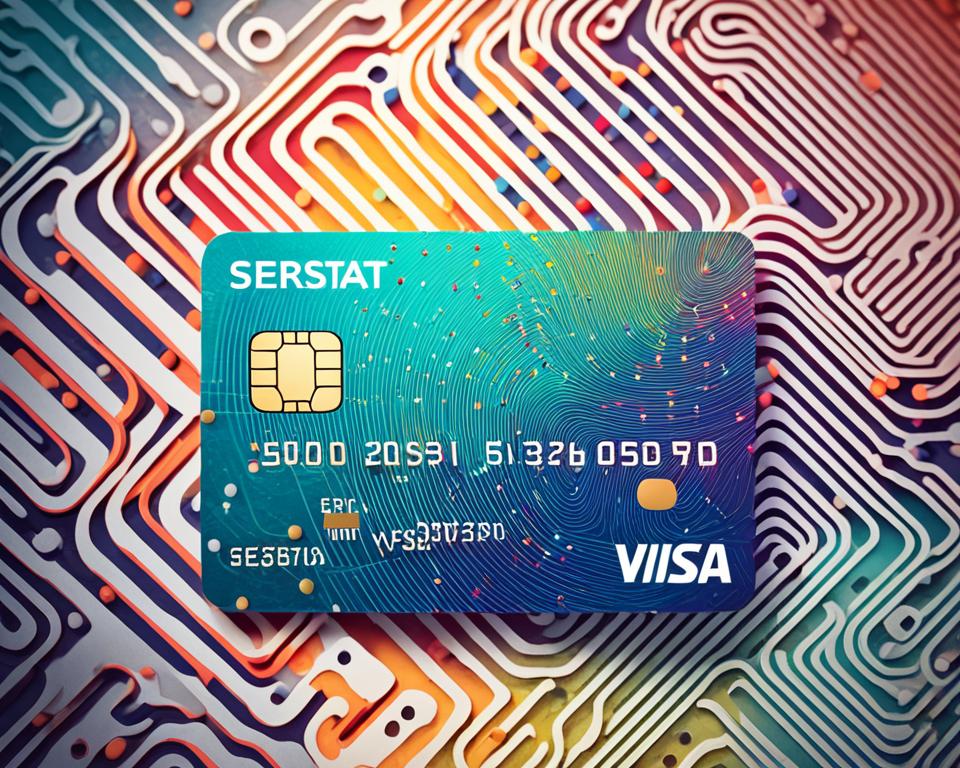
Following approval, a temporary authorization hold is placed on the corresponding amount of the cardholder’s credit limit, which reduces their available credit. However, it is only with the conclusion of the billing cycle that the cardholder is formally liable for repayment. At this juncture, the credit card issuer generates a statement for the cardholder, summarizing all transactions, the total balance due, the minimum payment required, and the payment deadline, representing the entirety of the cardholder’s financial activity during the cycle.
The ability to comprehend how credit cards operate sets the stage for responsible credit management. Cardholders must appreciate that each transaction reflects not just a subtraction from their credit line, but also an addition to their financial history, influencing their credit score and fiscal repute.
Below is a simple table depicting a credit card transaction process:
| Step | Action | Financial Impact |
|---|---|---|
| 1 | Cardholder Initiates Transaction | Request for authorization sent to merchant’s bank |
| 2 | Card Issuer Approves Transaction | Available credit reduced by transaction amount |
| 3 | Billing Cycle Concludes | Cardholder presented with a statement of all charges |
Grasping the essence of Making Sense of Credit Card Transactions is not merely about keeping tabs on spending—but it’s about taking the reins on one’s financial destiny. The information on that monthly statement—the detailed transactions, the remaining credit limit, the finance charges accrued—offers valuable insights into personal financial habits and provides an opportunity to course-correct as necessary.
Moving beyond the micro-level of individual transactions, understanding the ebbs and flows of credit card usage fosters a profound literacy in personal finance. It pits the immediacy of today’s expenditure against the foresight of tomorrow’s financial health, drawing a throughline that binds choices made at the checkout line to the broader strokes of credit histories and futures.
Analyzing Credit Card Transactions
To comprehend the intricacies behind Understanding Credit Card Functionality, it’s pivotal to dissect the process that begins with a mere swipe of a card and evolves into a detailed billing statement. Each transaction signifies more than an exchange of goods or services; it’s a financial decision that affects one’s credit landscape. This section delves into the sequence of events from initiating a purchase to the final billing phase, providing clarity on the lifecycle of a credit card transaction.
From Swiping the Card to Billing: The Process
The journey of a credit card transaction is a fascinating tapestry of data interaction and banking protocol. It starts at the point of sale, where the cardholder presents their credit card for payment. The merchant’s system captures the transaction details and communicates with the acquirer bank, signaling for funds authorization. The credit network then plays its role, acting as the conduit for information between the acquirer bank and the card issuer.
Once the issuer approves the transaction, implying adequate available credit and no red flags for fraud, the cardholder’s available credit is decreased to reflect the purchase amount. This ballet of digital communication happens in seconds, yet its implications reverberate until the end of the billing cycle, when a statement captures all such transactions.
The statement isn’t just a ledger; it’s a narrative of the cardholder’s monthly financial activity, outlining how much has been spent, where, and what remains to be compensated to the issuer. This document is invaluable for managing finances and credit – a tool for both reflection and planning.
Making Sense of Your Credit Card Statement
Reading a credit card statement is far from perusing a simple receipt; it’s an examination into one’s financial behaviors over the billing period. This report comprehensively details every transaction, but it also serves as a barometer for a cardholder’s financial standing, showcasing the total balance, any accrued interest, minimum payment due, and the all-important payment due date.
Understanding these elements is crucial to maintaining a positive credit standing and avoiding unnecessary charges. In an effort to illuminate the connection between credit card use and financial well-being, let’s decipher the typical components found on a credit card statement:
| Statement Feature | Description | Importance |
|---|---|---|
| Balance Forward | The amount carried over from the previous billing cycle. | Gives insight into unpaid debts that may accrue interest. |
| Transactions | A detailed list of purchases, cash advances, and payments made. | Allows the cardholder to track spending and spot any discrepancies. |
| Total Balance | The cumulative amount currently owed to the card issuer. | Assists in budgeting and reminds the cardholder of their financial obligations. |
| Minimum Payment Due | The smallest amount that can be paid to keep the account in good standing. | Crucial to avoid late fees and protect credit scores. |
| Payment Due Date | The deadline by which the cardholder must make at least the minimum payment. | Ensures timely payments to thwart additional interest charges. |
| Credit Available | The remaining credit available for use. | Helps in making responsible spending decisions. |
As cardholders digest the contents of their credit card statements, they’re effectively auditing their fiscal management and identifying areas for improvement. By Understanding Credit Card Functionality, one can use this monthly synopsis to avert financial pitfalls and enhance credit health – reinforcing the connection between informed consumption and economic solvency.
APR Explained: Understanding Interest Rates on Credit Cards
Those taking aim to master their fiscal fitness need to have a firm grasp on How Credit Cards Operate, particularly in the realm of interest rates. Central to this is the concept of Annual Percentage Rate or APR, which laypeople and credit aficionados alike encounter when utilizing credit cards for their various needs.
As you dive deeper into the dynamics of credit cards, it becomes evident that APR is not only a three-letter acronym but also a pivotal element influencing the cost of borrowing. Understanding APR is essential for anyone looking to navigate the credit card landscape adeptly and manage their finances with acumen.
What is APR?
APR, which encapsulates the Annual Percentage Rate, quantifies the yearly rate that is charged for borrowing on a credit card. This rate is applied to the outstanding balance and serves as a key factor in determining the incurred interest charges for amounts that surpass the grace period.
Calculating Your Interest Payments
To meticulously assess the financial charges that follow credit card expenditures, calculating your interest payments is a quintessential skill. By applying the APR to the balance you carry beyond the due date, a clearer financial picture forms, allowing you to make strategic choices that maintain (or rectify) the health of your credit score.
Let’s demystify this with a breakdown. If you’re saddled with an outstanding balance on your credit card, the APR becomes a critical player, translating to additional dollars on top of your actual spent amount. Imagine carrying a balance—without accruing fees—through the year. Here’s how the math shakes out:
| Balance | APR | Time Period | Interest Accrued |
|---|---|---|---|
| $1,000 | 20% | 1 Year | $200 |
| $500 | 20% | 1 Year | $100 |
| $2,000 | 20% | 1 Year | $400 |
These figures illuminate the tangible consequences of carrying a balance over time. It emerges clearer why finessing your financial strategies around the APR—and preventing your balances from lingering beyond the grace period—is advantageous for your economic health.
With an understanding of how the APR influences the costs tied to credit cards, individuals are better equipped to wield their financial instruments with wisdom—avoiding unnecessary charges and strategically planning purchases to align with their financial abilities. Thoughtful understanding of interest rates is a cornerstone of credit card mastery and a necessary element in the toolkit of modern consumers.
Credit Card Usage Guide: Maximizing Benefits
Exploring the inherent advantages of credit cards not only involves the savvy use of the tool but also an understanding of its provisions. Credit cards are equipped with a range of features designed to bolster one’s financial acumen while providing beneficial rewards. From offering financial rewards to mitigating risks, credit cards serve a dual purpose of enhancing personal finance and protecting the cardholder.
Earning Rewards and Cash Back
One of the most enticing aspects of credit card benefits is the opportunity to earn rewards and cash back. Each purchase can accumulate points or rebates, which may translate into savings on future purchases or even cash in hand. These rewards schemes are a fantastic way to stretch each dollar further and enjoy bonuses that come along with planned spending.
To maximize these benefits, cardholders should consider their spending habits and choose a card that offers the best rewards for their lifestyle, whether it be travel, groceries, or dining out. The more aligned the rewards program is with one’s personal spending patterns, the greater the potential gains.
Safeguarding Against Fraud and Theft
Security is a paramount concern in financial transactions, and credit cards work to protect users with robust measures against fraud and theft. Most credit card issuers offer $0 fraud liability policies, which shield the cardholder from unauthorized transactions. Additional safety features may include real-time transaction alerts, the ability to freeze cards instantly, and chip technology that reduces the risk of counterfeit fraud.
As part of a comprehensive credit card usage guide, cardholders should thoroughly review their card’s terms and conditions to understand the protections offered. Understanding these features ensures one can swiftly and confidently manage their cards in the unfortunate event of fraudulent activity.
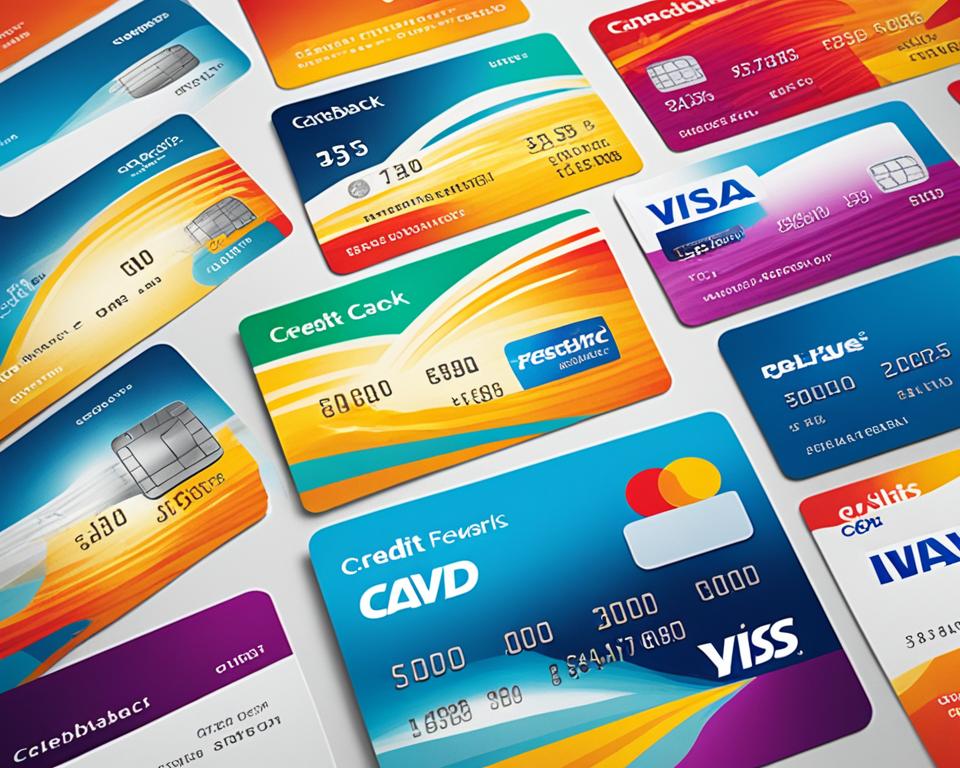
By engaging with the credit card benefits designed to reward and protect, cardholders can make the most out of their financial instruments. The key is to stay informed, make wise choices, and utilize the card’s features to their full extent, ensuring that every swipe or tap not only fulfills a payment but contributes toward an overall strategy of personal financial enhancement.
Debit vs. Credit Card Comparison
When considering the tools at our disposal for managing finances, it’s pivotal to understand the differences and uses of various banking cards. Debit and credit cards, although similar in appearance, fulfill different roles in personal finance. This section elucidates the distinct features, as well as the advantages and drawbacks of each card type, so that individuals can make a savvy decision in their choice of plastic.
Pros and Cons of Debit Cards
Debit cards offer a direct connection to your checking account, making funds available for immediate use. This immediacy can facilitate budgeting, as spending is limited to the account’s current balance, thus curtailing the propensity to accrue debt. However, debit cards lack the credit-building capacity of credit cards and may offer fewer protections in the event of fraudulent transactions or disputes.
Advantages of Using Credit Over Debit
Credit cards stand out by offering a layer of financial flexibility. Unlike debit cards, they provide a line of credit that can be drawn upon, offering the convenience of repaying over time. This credit utilization, when managed responsibly, contributes positively to credit scores, enhancing a consumer’s borrowing power. Furthermore, credit cards typically come with comprehensive consumer protections, rewards programs, and the potential for building a solid credit history, presenting a clear advantage over their debit counterparts.
The following table presents a side-by-side comparison of key features associated with debit and credit cards:
| Feature | Debit Card | Credit Card |
|---|---|---|
| Fund Source | Direct from checking account | Borrowed from a credit limit |
| Immediate Financial Impact | Yes, decreases account balance | No, repayable at a later date |
| Credit Score Influence | None directly | Yes, through credit utilization |
| Consumer Protections | Limited | Extensive |
| Rewards and Incentives | Rarely offered | Commonly available |
In summary, while debit cards are grounded in straightforward spending, credit cards offer a spectrum of benefits and a route to bolster one’s credit standing. This comparative study lays the foundation for cardholders to approach their finances with knowledge, balancing the convenience of immediate spending against the long-term advantages of credit building and security.
Credit Building with Credit Cards: What You Need to Know
Understanding the incorporation of credit card functionality into credit building strategies is essential for anyone looking to bolster their financial standing. With responsible use, credit cards become a powerful tool for constructing a healthy credit history. This section aims to delve into the best practices for maintaining a robust credit score and the significance of monitoring credit with FICO® Scores.
Best Practices for a Good Credit Score
The journey to a good credit score is paved with disciplined financial habits. Consistently managing credit card obligations not only showcases your reliability as a borrower but also contributes significantly to your overall credit health. Below are actionable strategies that will guide you through credit building using your credit card.
- Timely Payments: Ensure that you pay your credit card bills on or before the due date every month to avoid adverse effects on your credit score.
- Credit Utilization: Aim to use less than 30% of your credit limit to maintain a favorable debt-to-credit ratio, which positively impacts your credit score.
- Longevity: The length of your credit history matters, so keep old accounts open and active to contribute positively to your credit score over time.
- Variety: Having a good mix of credit, including revolving credit accounts and installment loans, can contribute to a well-rounded credit profile.
- Limit Inquiries: Every time you apply for a new credit card or loan, a hard inquiry is made on your credit report. Too many hard inquiries can be detrimental, so apply for new credit sparingly.
Monitoring Credit with FICO® Scores
Staying informed about your credit health involves regular check-ups of your FICO® Score, as this is the metric most commonly used by lenders to assess creditworthiness. Monitoring your score allows you to react promptly to any changes and adjust your credit habits accordingly. Here are steps to effectively keep track of your FICO® Score:
- Review Your Credit Report: Check your credit report periodically for any errors or discrepancies that may affect your score.
- Score Trackers: Use score tracking services offered by many credit cards to keep an eye on your FICO® Score and understand factors affecting it.
- Alerts and Notifications: Set up alerts that notify you of any significant changes or updates to your credit score.
By following these guidelines, you can align your credit card use with long-term financial stability and credit improvement. The synergy between responsible credit card use and regular credit monitoring is undeniable, bolstering one’s credentials in the eyes of future lenders.
It’s worth recognizing that while building credit may take time, the consistent application of these best practices can lead to a robust, resilient financial profile. Credit card functionality extends beyond mere transactions; it plays a crucial role in shaping an individual’s economic future through credit building strategies — a process made easier through the diligent monitoring of one’s FICO® Scores.
Navigating Credit Card Fees
Being well-versed in navigating credit card fees is a cornerstone of financial savvy. As consumers heavily engage in understanding credit card transactions, it’s just as crucial to comprehend the extra costs that may accompany the convenience of using credit cards. This examination into various types of fees, and how to mitigate or outright avoid them, is vital for anyone eager to minimize expenses that arise with owning and using credit cards.
Most cardholders are familiar with some of the common charges tied to credit card use but gaining a deeper understanding can lead to substantial savings. Whether it’s annual fees that come due once a year, balance transfer fees incurred during the consolidation of debt, or over-limit fees levied when spending surpasses the approved credit limit, each has its own set of rules and avoidance strategies.
In particular, late fees can exert significant upward pressure on the real cost of using credit cards. These are charges applied when a cardholder fails to make the minimum payment by the stated due date. Such fees not only impact the wallet but potentially the credit score as well.
To help articulate the common fees one might encounter and the best practices to counter them, the table below details each type of fee along with guidance on how to navigate them:
| Fee Type | Description | How to Avoid or Minimize |
|---|---|---|
| Annual Fee | A yearly charge for the privilege of using the credit card. | Opt for a credit card that doesn’t charge an annual fee, or justify the fee with rewards and benefits that outweigh the cost. |
| Balance Transfer Fee | Incurred when moving a balance from one card to another, typically a percentage of the transferred amount. | Consider cards that offer zero or reduced fees on balance transfers as a promotional feature. |
| Over-Limit Fee | Charged when a purchase exceeds the credit limit. | Monitor your spending to ensure it stays within the credit limit or opt in for over-limit protection if offered by the issuer. |
| Late Fee | Applied when the minimum payment isn’t made by the due date. | Setup auto-payments and alerts to ensure minimum payments are always made on time. |
| Cash Advance Fee | A fee for the convenience of withdrawing cash against your credit card’s limit. | Avoid using your credit card for cash advances due to high fees and interest rates unless absolutely necessary. |
| Foreign Transaction Fee | A charge for making purchases in a foreign currency. | Use credit cards that do not charge foreign transaction fees when traveling abroad or making purchases in foreign currencies. |
Adopting proactive measures such as setting up automatic payments, carefully selecting the right credit cards for your financial profile, and keeping a vigilant eye on account activity are the pillars for navigating credit card fees effectively. Such astute management ensures that the joys of credit card ownership do not turn into financial burdens.

In sum, while credit cards are powerful financial tools that offer convenience and the opportunity to build credit, they come with potential pitfalls in the form of various fees. Educated consumers who take time to understand the terms and conditions of their card agreements can navigate credit card fees successfully, keeping costs in check and maximizing the benefits of their credit.
Strategic Advising for First-time Credit Card Users
Embarking on the financial journey with a first credit card is a pivotal moment for many. It offers a chance to establish a solid credit history while learning the ropes of smart money management. Nevertheless, the selection of that very first credit card can be overwhelming, especially with the plethora of options available. That’s why obtaining first-time credit card advice is crucial; it helps navigate the complex waters of credit card ownership and ensures a selection that aligns with one’s lifestyle and financial goals.
Choosing Your First Credit Card
As a beginner in the credit field, the array of choices might have you asking where to begin. A valuable step in the Credit Card Selection Guide is to prioritize cards that are forgiving and accommodating to those new to credit. These cards should specifically address the typical concerns and needs of first-time users, striking a balance between offering beneficial learning tools and avoiding unnecessary costs that can quickly spiral into debt.
Features to Look for in a Starter Card
For first-time credit card users, several key features can signal a good starter card. Here’s an essential list to pay attention to:
- No annual fee: To reduce overhead costs and ease the initial financial burden, opting for a card without an annual fee is a wise move.
- FICO® Score tracker: Many credit cards now offer free tools to monitor and understand your FICO® Score—valuable for witnessing credit growth.
- Low security deposit: For those considering a secured credit card, look for options that require minimal security deposits, making credit access more attainable.
Following this guide firmly places first-time cardholders on the path to establishing credit sensibly and sustainably. With focus and due diligence, your first credit card can become a testament to financial responsibility, opening doors to numerous opportunities down the line.
Mitigating the Risks: Responsible Credit Card Use
In the realm of personal finance, responsible credit card use is critical for maintaining a sound financial status. Credit cards, when used wisely, can be a boon to your budget and credit score. Yet, if mishandled, they have the potential to upend one’s financial stability. This underscores the importance of understanding and managing credit utilization and avoiding the pitfalls of overspending.
Understanding Credit Utilization
Credit utilization, a term that anyone with a credit card should be well aware of, refers to the ratio of your credit card balance to your credit limit. Responsible credit card use means keeping this ratio in check to maintain a healthy credit score. Financial experts recommend keeping your credit utilization below 30% to demonstrate to lenders that you are a prudent borrower. Here are a few credit utilization tips to guide responsible spending:
- Monitor your balances regularly to ensure they stay under the optimal threshold.
- Set balance alerts to keep you informed when you’re nearing your credit limit.
- If possible, pay down balances mid-cycle to lower your utilization ratio.
Applying these credit utilization tips diligently can lead to an improved credit profile over time, paving the way for better borrowing terms in the future.
Overcoming the Temptation to Overspend
One of the biggest challenges faced by credit card users is the temptation to overspend. As such, it’s essential to differentiate between wants and needs and to refrain from treating credit cards as a license to spend money you don’t have. The consequences of succumbing to spending temptations can be dire, with mounting debt that can spiral out of control.
Here are some strategies to prevent overspending:
- Create a budget to track and categorize your expenses.
- Use credit cards for planned purchases, rather than impulsive buys.
- Consider the future implications of your spending, remembering that every charge today affects tomorrow’s budget.
By following these guidelines and prioritizing responsible credit card use, one can circumvent the risks associated with credit cards and preserve their financial health.
| Tips for Responsible Credit Card Use | Practices to Adopt |
|---|---|
| Credit Utilization Management | Keep balances below 30% of your credit limit |
| Budget Adherence | Track your expenses and avoid spending beyond your means |
| Spending Accountability | Use credit cards for necessary items, not luxury impulses |
| Avoiding Debt Accumulation | Pay off full balance monthly, if possible, to avoid interest charges |
Unveiling the Benefits: How Credit Cards Can Work for You
There’s an assortment of Credit Card Benefits that go beyond simply facilitating purchases. When used strategically, credit cards stand as powerful financial instruments offering numerous advantages. Let’s explore the key benefits that credit cards bring to the table, enhancing your financial experiences and providing valuable opportunities for Building Credit with Credit Cards.
Convenience and Security Features
Apart from offering a convenient transactional tool, credit cards provide robust security measures that protect users in the digital age. Benefits such as $0 fraud liability, real-time transaction alerts, and tap-and-go technology are just a few of the conveniences that make credit cards a preferred choice for secure payments.
- Immediate acceptance almost anywhere in the world for hassle-free purchases.
- Enhanced security due to EMV chip technology and contactless payment options.
- Quick resolution and minimal financial impact from fraudulent activities, thanks to proactive monitoring and customer protection plans.
Building a Solid Credit History
Building a strong credit history with credit cards is not only plausible; it’s a path followed by countless financially savvy individuals. By maintaining a track record of on-time payments and managing credit utilization effectively, credit cards become pivotal in laying down a strong foundation for one’s credit score.
These responsible financial behaviors are reflected in credit reports and play a critical role in shaping the borrowing terms one might receive in the future. Lower interest rates, better loan terms, and increased creditworthiness—all stem from disciplined and smart credit card usage.
A well-managed credit card account signals to lenders that you’re a less risky borrower, which can be advantageous when seeking to finance larger investments like homes or cars.

| Benefit | Description | Impact on Credit History |
|---|---|---|
| On-Time Payments | Making payments before or on the due date. | Direct positive influence on credit score. |
| Credit Utilization | Using a smaller percentage of your available credit. | Contributes to a favorable credit utilization ratio, enhancing credit standing. |
| Longevity of Accounts | Keeping credit card accounts open for extended periods. | Overall lengthening of credit history, which can benefit credit analysis. |
| Credit Mix | Having a variety of credit types in your financial portfolio. | Shows responsible management of multiple forms of credit. |
| Hard Inquiries | Being prudent with applications for new credit lines. | Minimizes potential negative impacts from too many hard inquiries. |
Ultimately, embracing the spectrum of credit card benefits can lead to a healthy financial lifestyle, enabling broader economic opportunities and security. When wielded wisely, credit cards are not just plastic conveniences but instrumental assets in one’s financial toolkit.
Secured Cards: A Safe Introduction to Credit
For individuals aiming to enter the credit arena or elevate their credit standing, the Secured Credit Card Overview forms an essential chapter in the book of financial literacy. How do credit cards work for those with no credit history or a blemished one? Secured credit cards emerge as a low-risk gateway to understanding and managing credit. By aligning the credit limit with a refundable security deposit, these cards instill confidence and discipline, paving the way towards a robust financial future.
Utilizing a secured credit card is akin to training wheels in the cycling journey of credit. Consumers deposit funds upfront which serve as collateral, setting their credit limit equal to the deposit amount. This safety net allows the cardholder to make charges up to the limit with the understanding that they are borrowing against their own funds.
As a credit-building tool, secured cards offer a controlled environment where payment habits can be honed without the daunting risk of falling into unmanageable debt. It’s an educational opportunity for users to witness firsthand how credit cards function within the parameters of their own financial ecosystem.
- Opportunity to establish or rebuild credit
- Security deposit equals credit limit
- Transition potential to unsecured cards
- Introduction to credit practices and responsibilities
As individuals progress in their credit journey, diligent use of a secured credit card can lead to eligibility for traditional, unsecured cards. Here lies the reward for responsible management: improved credit scores which unlock the doors to enhanced borrowing potential.
| Feature | Benefits of Secured Credit Cards | Path to Unsecured Credit Cards |
|---|---|---|
| Credit Limit Based on Deposit | Minimizes risk and helps manage spending | Establishes a track record for future credit evaluation |
| Payment Reporting | Consistent reporting builds credit history | Demonstrates creditworthiness to other lenders |
| Credit Education | Practical understanding of credit usage and interest rates | Provides knowledge for handling more complex credit products |
| Upgrade Options | Many issuers offer a path to ‘graduate’ to an unsecured card | Credit score improvements can lead to better terms and rewards |
In the financial world, a secured credit card stands as an invaluable stepping stone towards achieving credit proficiency. Its framework encourages users to develop good habits, monitor their credit regularly, and embark on a journey that leads to a free-standing credit reputation. Indeed, understanding how to maneuver through the realm of credit with a secured card can set the foundations for sound financial behaviors that endure.
Advanced Credit Card Strategies: Beyond the Basics
As credit card users become more comfortable with basic credit card functionalities, they often seek ways to further leverage their cards for financial optimization. Advanced strategies such as effective balance transfer techniques and reward maximization can offer significant advantages. A mindful approach to these tactics can enhance your understanding of credit card strategies, leading to smarter spending and more robust financial management.
Exploring Balance Transfers
Balance transfers are a cornerstone of credit card strategies used by savvy cardholders looking to consolidate and reduce high-interest debt. This technique involves transferring outstanding balances from one or more credit cards to another card with a lower interest rate. Finding a card with a 0% introductory APR on balance transfers can be a pivotal move in minimizing interest payments and speeding up debt repayment.
However, it’s essential to understand not just the benefits but also the terms associated with balance transfers. Many cards charge a balance transfer fee, which can be a percentage of the transferred amount. Ensuring that the cost of the transfer doesn’t negate the interest savings is critical. Also, the special APR is typically for a limited period, after which the rate may revert to a higher standard APR.
Below is a breakdown of important considerations when contemplating balance transfers:
| Consideration | Details | Impact on Strategy |
|---|---|---|
| Introductory Rate Duration | Length of time the low or 0% APR is in effect. | Longer durations offer more time to pay off the debt without accruing high interest. |
| Balance Transfer Fee | Fee charged for transferring the balance, often 3-5% of the amount. | Assess whether potential interest savings outweigh the transfer fee. |
| Credit Limit | The maximum amount you can transfer to the new card. | Ensure the limit is sufficient to accommodate your existing debt. |
| Post-Introductory APR | Rate applied to remaining balance after the introductory period ends. | Important for understanding long-term implications on debt repayment. |
Considerations for Reward Optimization
Maximizing credit card rewards requires a strategic and disciplined approach to spending. Cardholders should aim to optimize the use of their cards in categories where they earn the highest rewards rates, be it travel, groceries, dining, or gas. Some cards offer flexible rewards programs allowing users to earn more points in categories of choice, thus matching their spending patterns and increasing rewards over time.
Staying updated on rotating categories, sign-up bonuses, and utilizing shopping portals also amplify rewards earnings. However, it’s essential to assess spending habits. Charging purchases solely for the sake of earning rewards but carrying a monthly balance can often offset those rewards due to interest charges.
Here are key strategies for reward optimization:
- Understand your credit card’s reward structure and align your spending accordingly.
- Take advantage of card issuer shopping portals for additional rewards on purchases.
- Pay balances in full to avoid interest that could negate the value of rewards earned.
- Keep track of the rewards program calendar and any changes to terms or categories.
By incorporating these credit card strategies into your financial planning, you can transform your credit card from a simple payment tool into a sophisticated instrument for financial betterment. As you take these advanced steps, always maintain a commitment to responsible credit use, and the path to financial acumen will be well within your reach.
Conclusion
As we wrap up our comprehensive journey through the landscape of credit, it becomes abundantly clear that a sound Credit Card Usage Guide isn’t merely optional—it’s indispensable. Credit cards, with their vast potential for convenience and fiscal empowerment, demand a level of literacy in their function and prowess. This understanding is crucial in piloting towards a stable financial horizon. Armed with the insights offered on navigating the nuances of Understanding Credit Card Functionality, consumers can steer clear of common pitfalls, making them architects of their own economic destiny.
Prudent credit card use goes hand-in-hand with regular oversight of fees, interest rates, and a judicious leveraging of benefits. It’s through such watchful management that credit cards transcend their plastic form, maturing into instruments of financial growth and personal freedom. The linchpin of this evolution is vigilant credit monitoring—keeping a pulse on one’s fiscal health, ensuring that credit scores blossom through careful, calculated use.
In sum, credit cards, when wielded with informed intent, become more than mere tools; they morph into stepping stones towards financial fortitude. Whether it’s acing the art of managing APR or optimizing points on every dollar spent, the subtleties of credit card usage can unfurl into broad strokes of financial wellbeing. Hence, a solid grasp of credit card mechanics—the very goal of this guide—sets not just the stage, but the entire arena for a dance with economic success.
FAQ
What is a Credit Card?
A credit card is a financial tool that allows individuals to borrow money up to a certain limit to make purchases or obtain services. It operates on a principle of revolving credit, which means that the funds can be borrowed and repaid repeatedly as long as the account is in good standing and credit is available.
How does the credit limit and available credit work?
The credit limit is the maximum amount that the card issuer has agreed you can borrow at any given time. Available credit is the amount that is currently unused and available for making purchases. It’s the difference between your credit limit and the current balance you owe.
How are credit card transactions processed?
When a cardholder initiates a purchase, the merchant sends a request to their bank for authorization. This bank then liaises with the card issuer to confirm that the transaction is valid and that the cardholder has sufficient credit available. Upon approval, the purchase amount is deducted from the available credit.
What information is included on a credit card statement?
A credit card statement includes details of all transactions made during the billing cycle, the total balance owed, the minimum payment required, any interest or fees incurred, and the due date by which the minimum payment must be made to avoid late fees.
What is APR and how does it affect credit card payments?
APR stands for Annual Percentage Rate and represents the cost of borrowing credit over a year. It affects credit card payments by determining the amount of interest one will pay on any balances carried beyond the payment due date. If the full balance is not repaid, the APR is applied to calculate the interest charges added to the outstanding balance.
How can cardholders maximize credit card benefits?
Cardholders can maximize benefits by using the card to earn rewards and cash back on purchases, taking advantage of promotional offers, and ensuring they understand and utilize the security features provided to protect against fraud and unauthorized transactions.
What are the advantages of using credit cards over debit cards?
Credit cards offer the ability to build credit history, provide fraud protection with limited liability for the cardholder, and often include rewards programs. They also can help manage cash flow with the grace period between purchase and payment due dates, which is not typically offered with debit card transactions.
What are some best practices for maintaining a good credit score?
Best practices include paying bills on time, keeping credit card balances low, avoiding opening multiple new lines of credit in a short period, monitoring your credit report regularly, and correcting any inaccuracies that may impact your score negatively.
How important is it to understand and monitor FICO® Scores?
It is vitally important because FICO® Scores are a key factor that lenders use to assess credit risk. By understanding and monitoring your FICO® Score, you can have a clearer picture of your credit health and make informed decisions to improve or maintain it.
What fees should credit card users be aware of?
Users should be aware of annual fees, balance transfer fees, foreign transaction fees, cash advance fees, over-limit fees, and late payment fees. Knowing these can help manage the costs associated with credit card use.
What features should one look for in a starter credit card?
First-time credit card users should look for low-interest rates, low to no annual fees, fraud protection, a grace period for payments, and educational resources to help with understanding credit. Many starter cards also include free FICO® Score tracking to help cardholders monitor their credit scores.
How does credit utilization impact credit scores?
Credit utilization is the ratio of your credit card balances to your total credit limits, and it significantly impacts your credit score. High utilization can indicate that you are over-reliant on credit and may lead to a lower score, while low utilization is generally viewed favorably by credit agencies.
Can overspending with credit cards be avoided?
Yes, by creating a budget, tracking expenses, and setting spending limits on the card, consumers can avoid the temptation to overspend. It’s also helpful to think of a credit card as a tool for convenience rather than an extension of income.
How do credit cards contribute to building a solid credit history?
By using credit cards responsibly, making payments on time, and keeping balances low, consumers can build a credit history that reflects positive financial behavior. This can boost their credit score and improve their chances of receiving favorable terms for future loans or credit cards.
What are the benefits of secured credit cards?
Secured credit cards are an excellent way for individuals with no credit or bad credit to start building or rebuilding their credit. Since these cards are backed by a security deposit, they present a lower risk for issuers and are more readily available to a wide range of consumers.
How can balance transfers be beneficial?
Balance transfers can be used strategically to consolidate high-interest credit card debt onto one card with a lower interest rate. This can lead to significant savings on interest payments and can help pay down debt faster.
What should be considered when optimizing credit card rewards?
When optimizing credit card rewards, consider the types of rewards that best fit your spending habits and lifestyle, such as travel points, cash back, or merchandise rewards. Also, pay attention to any restrictions or expiration dates on points, and strategize spending to maximize rewards accumulation without increasing debt.
